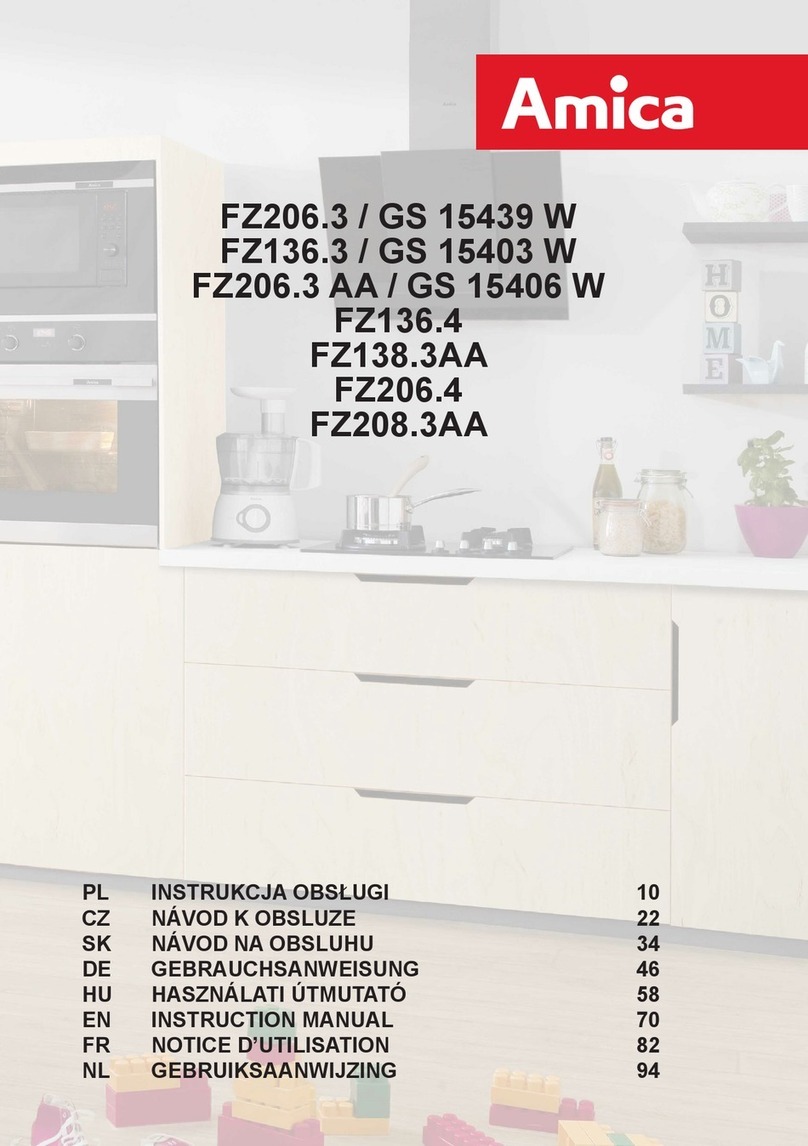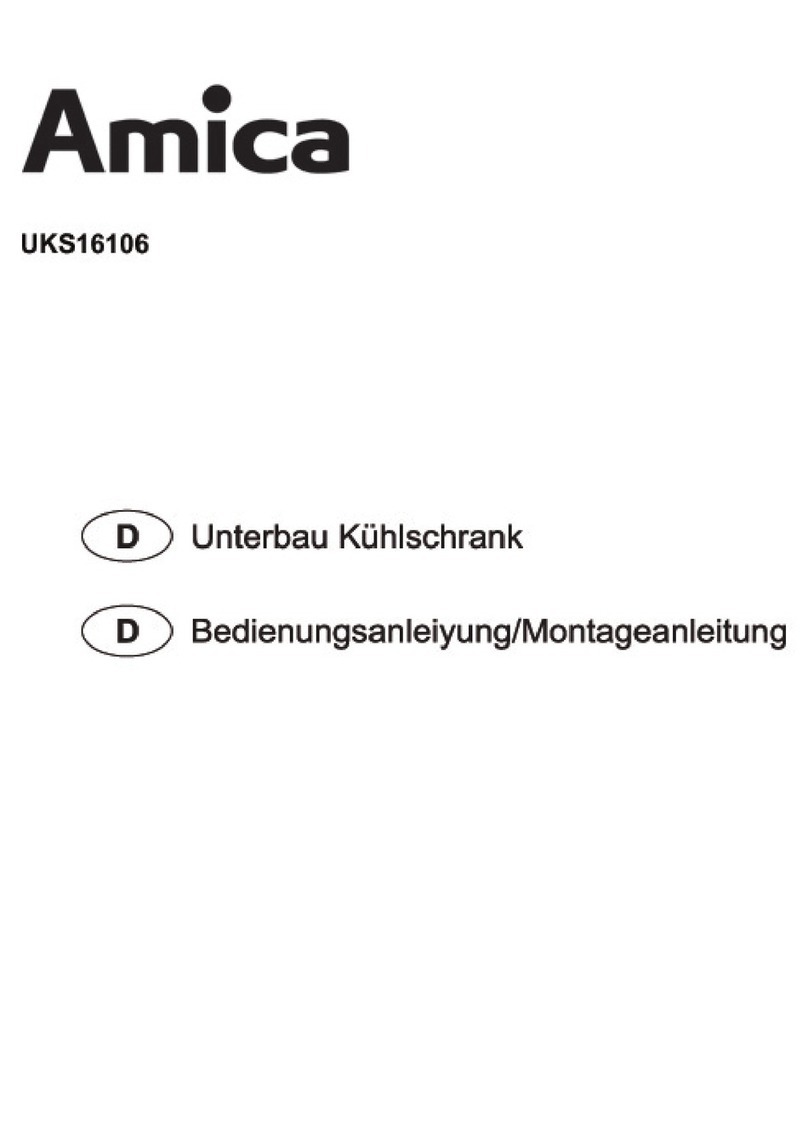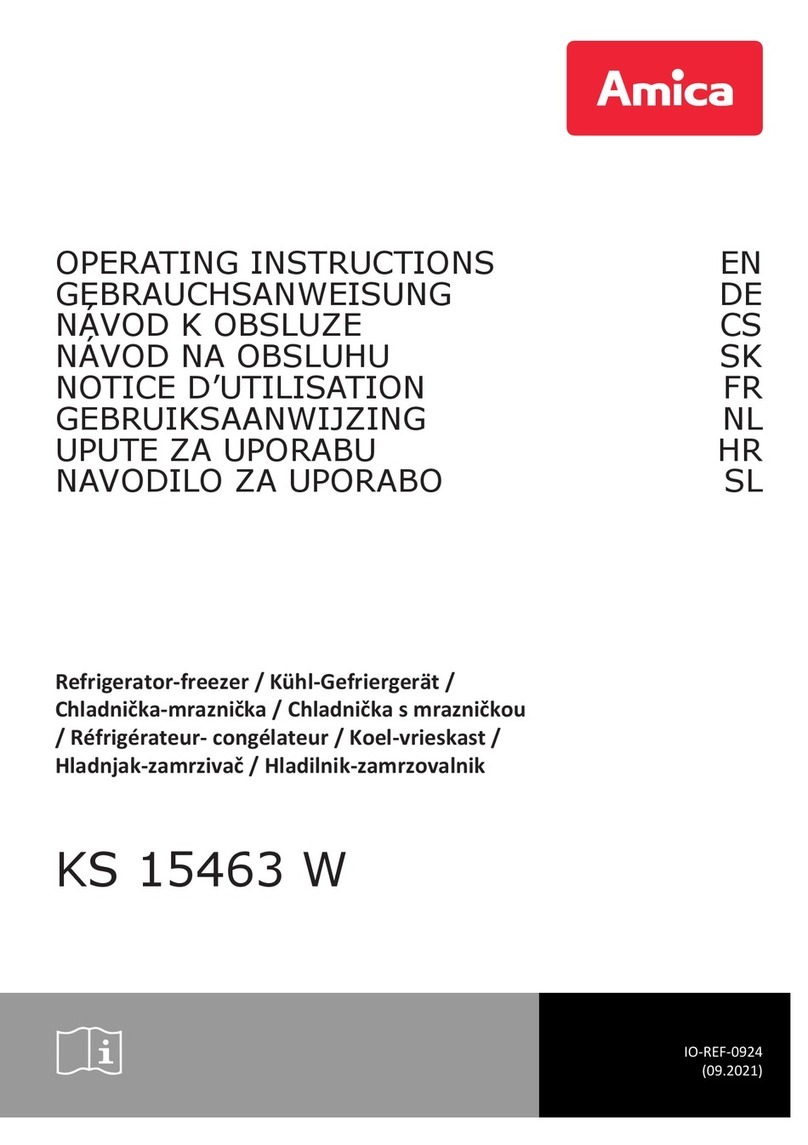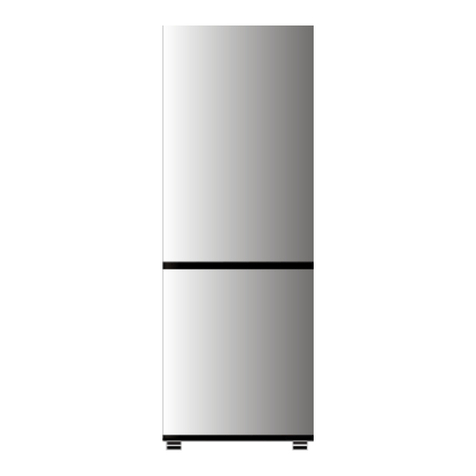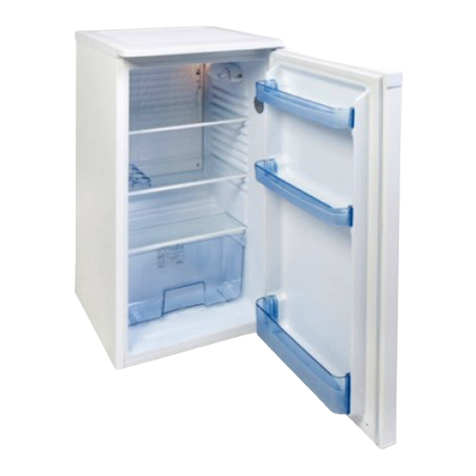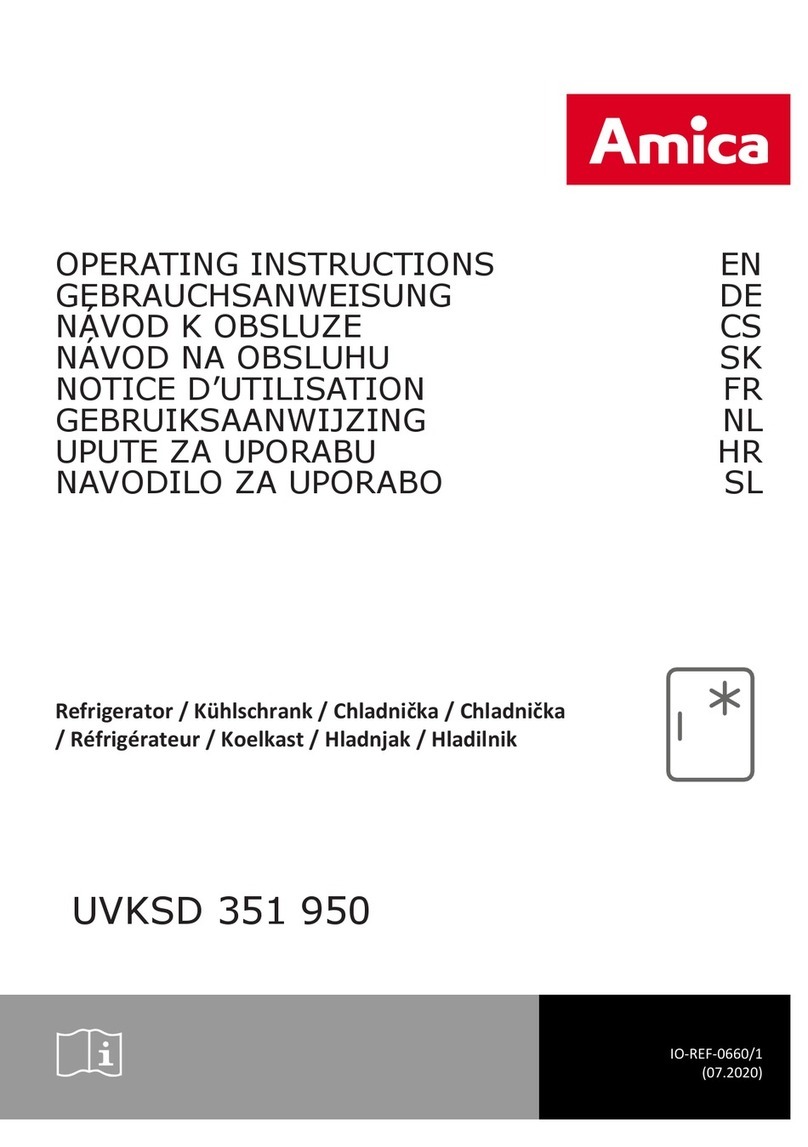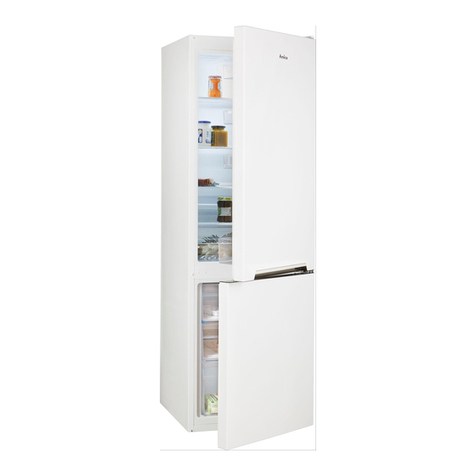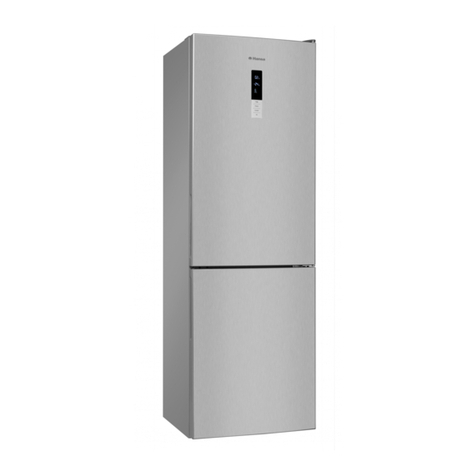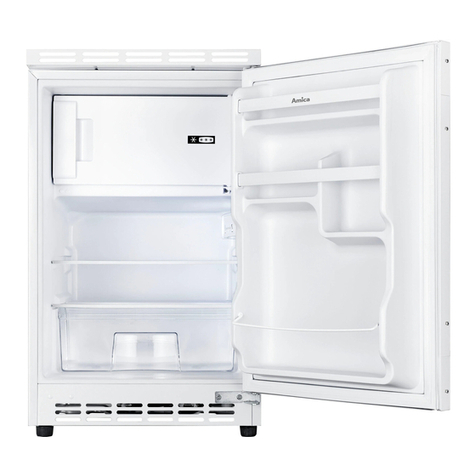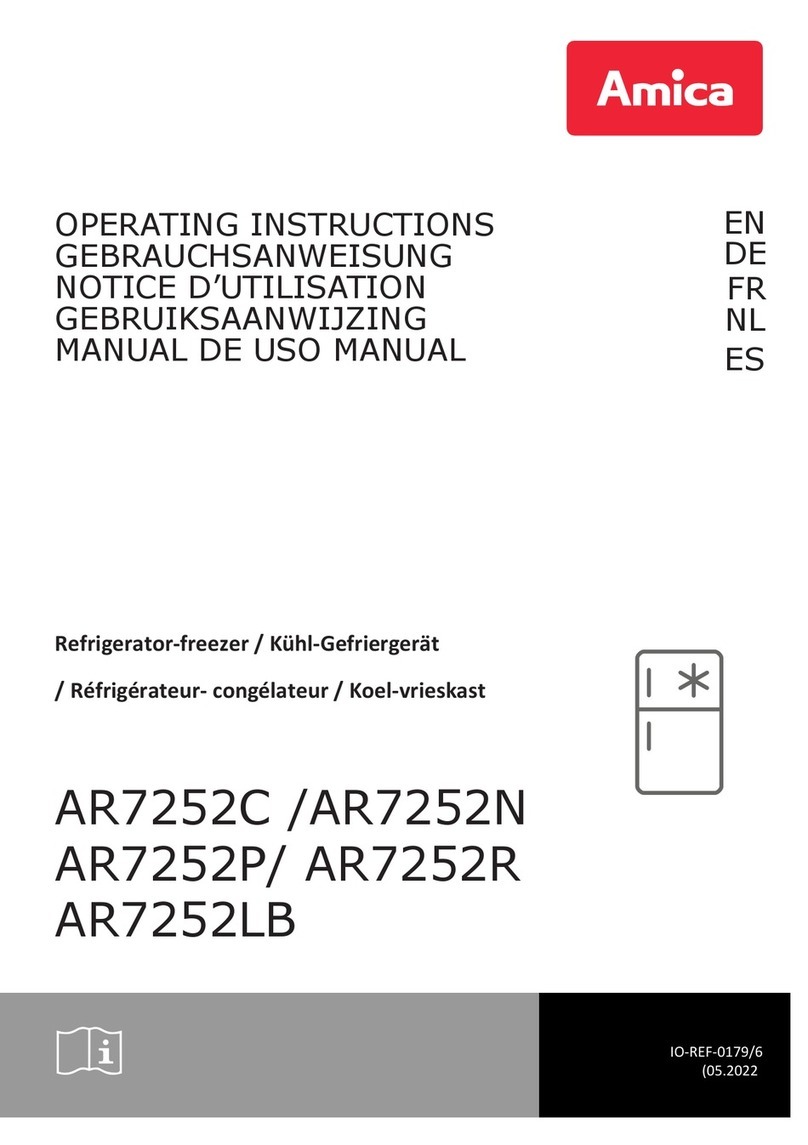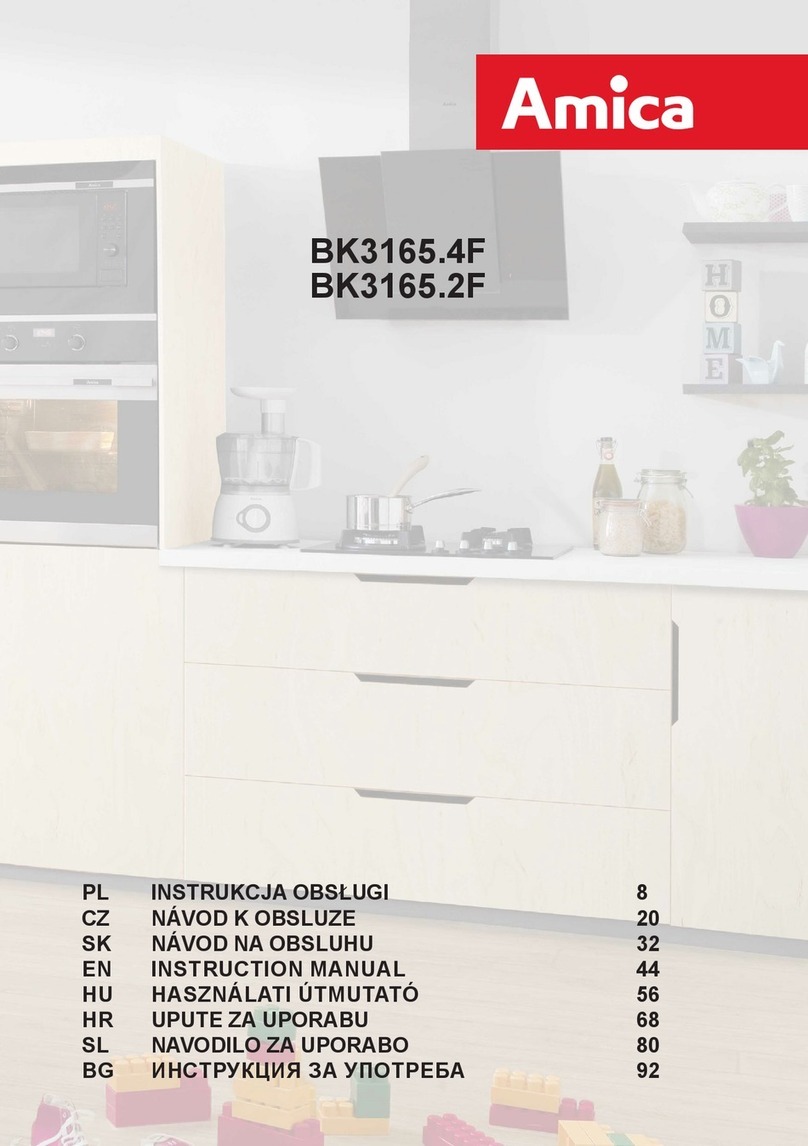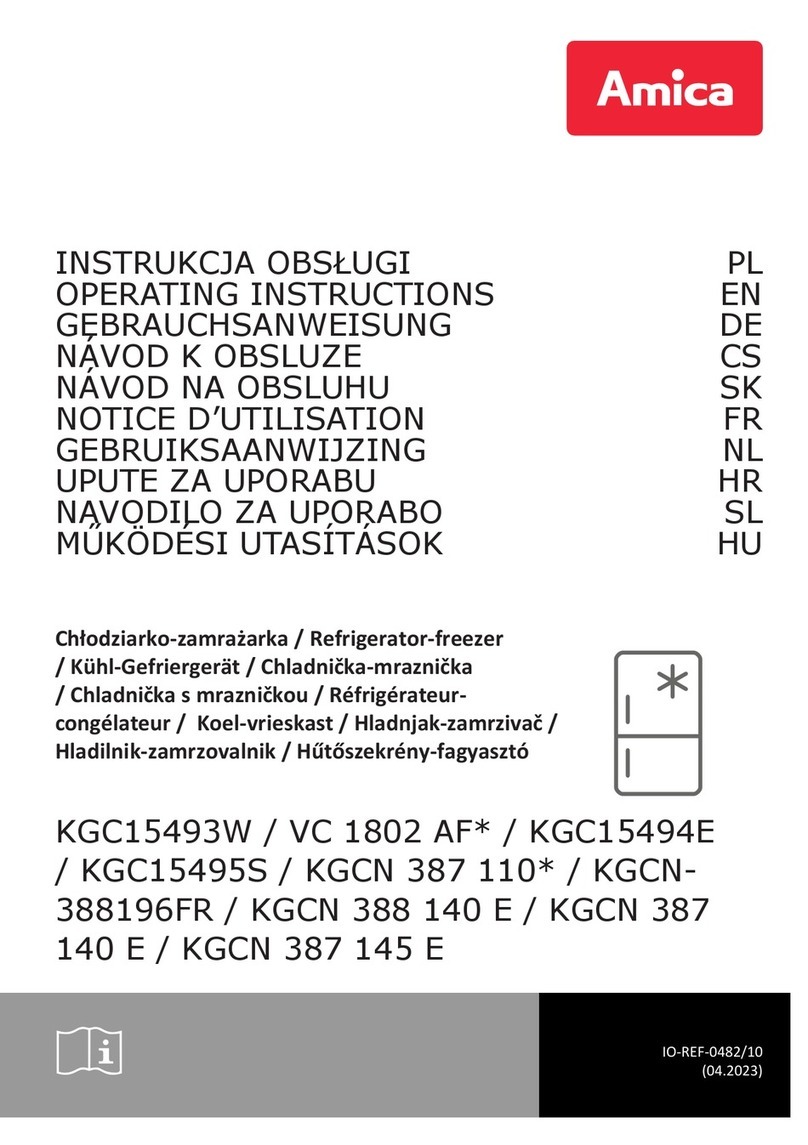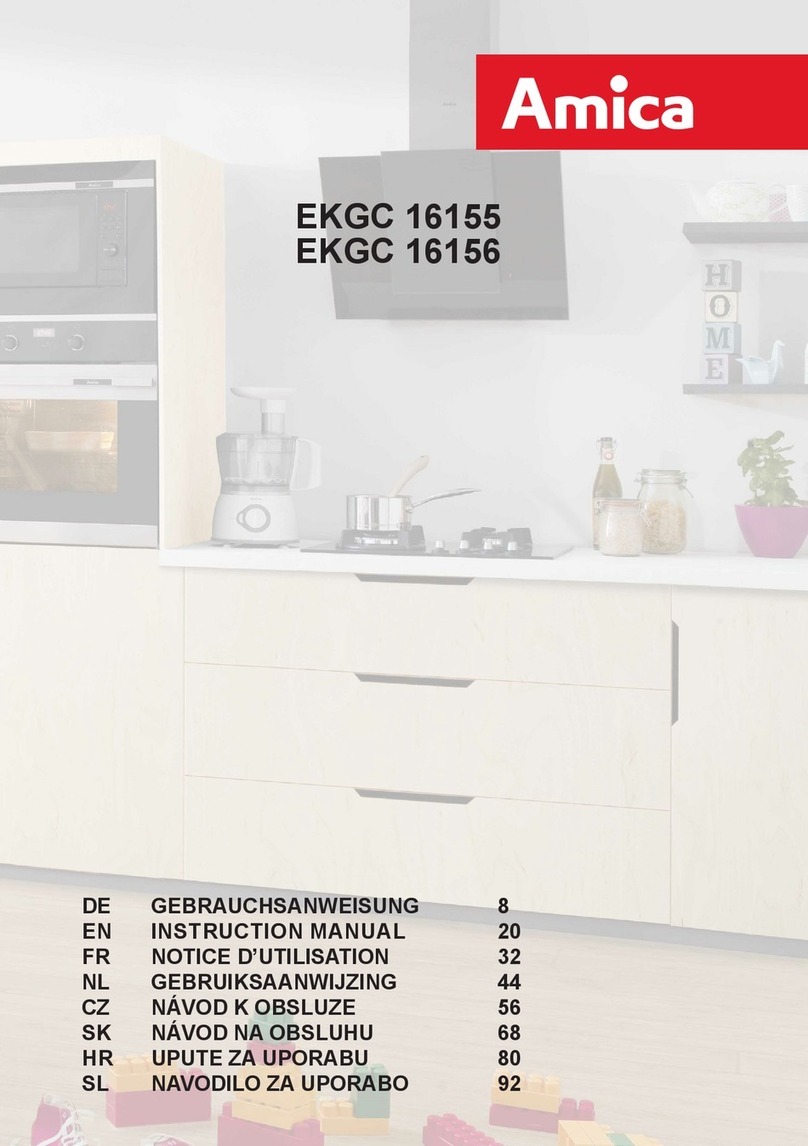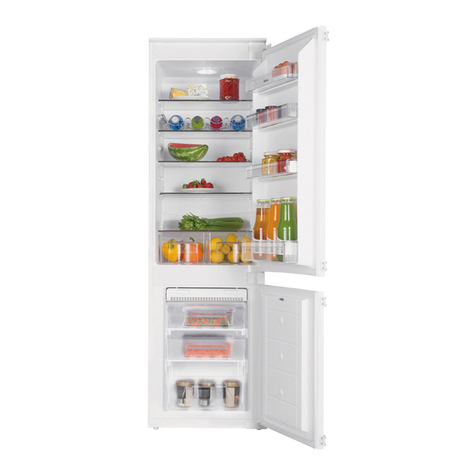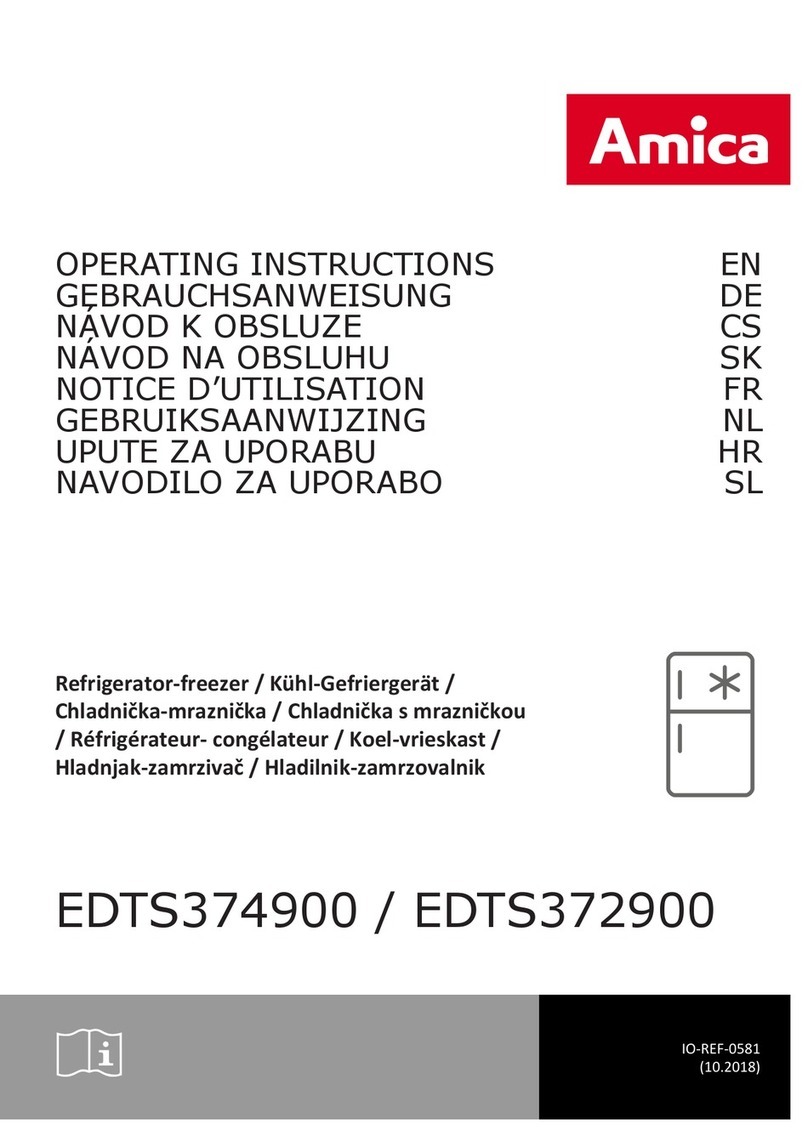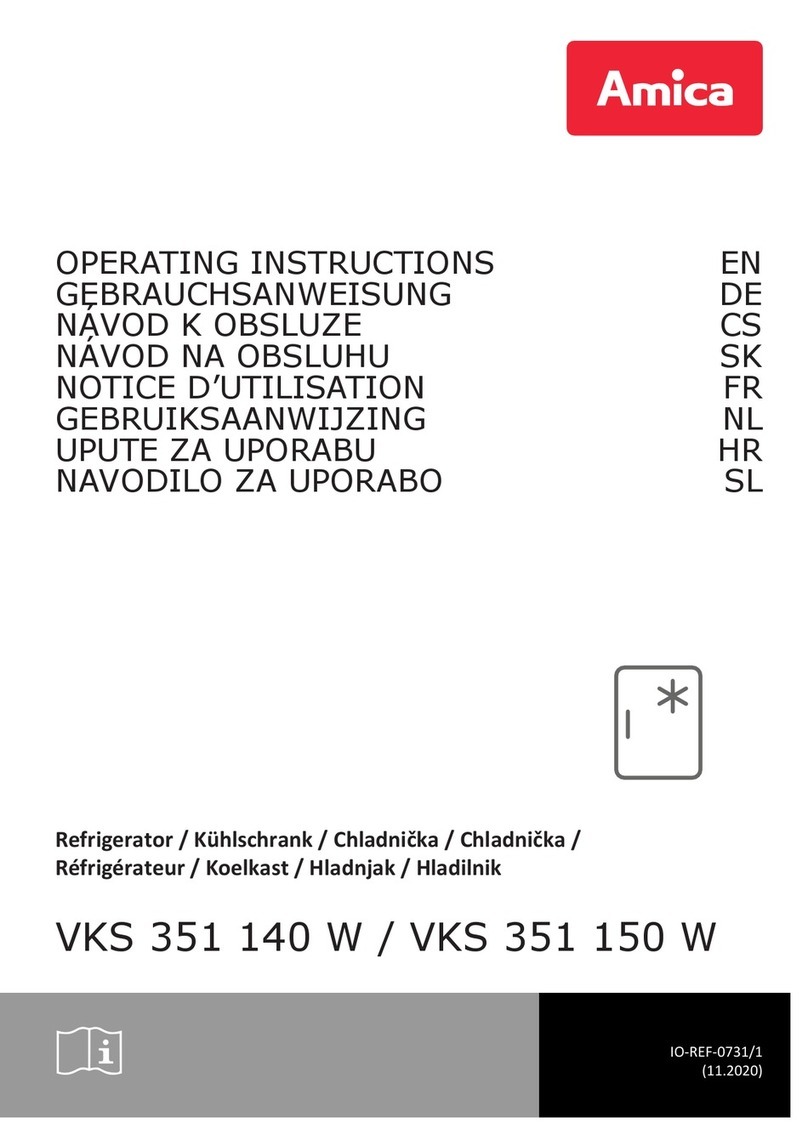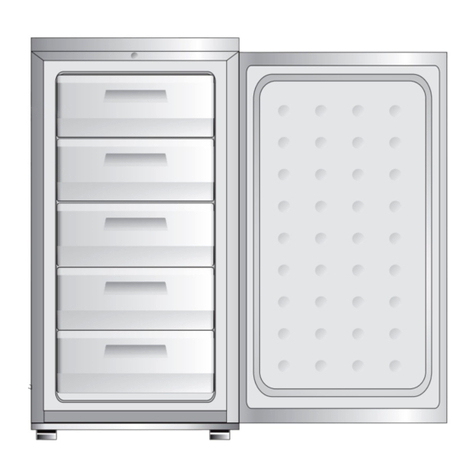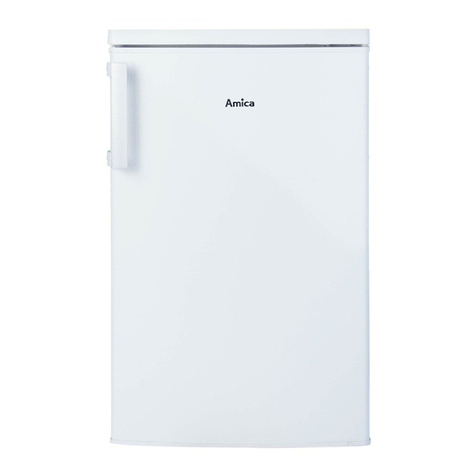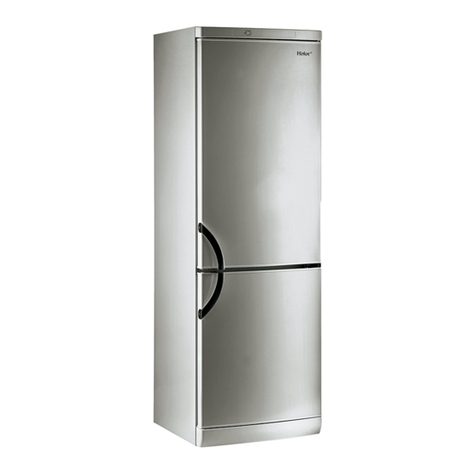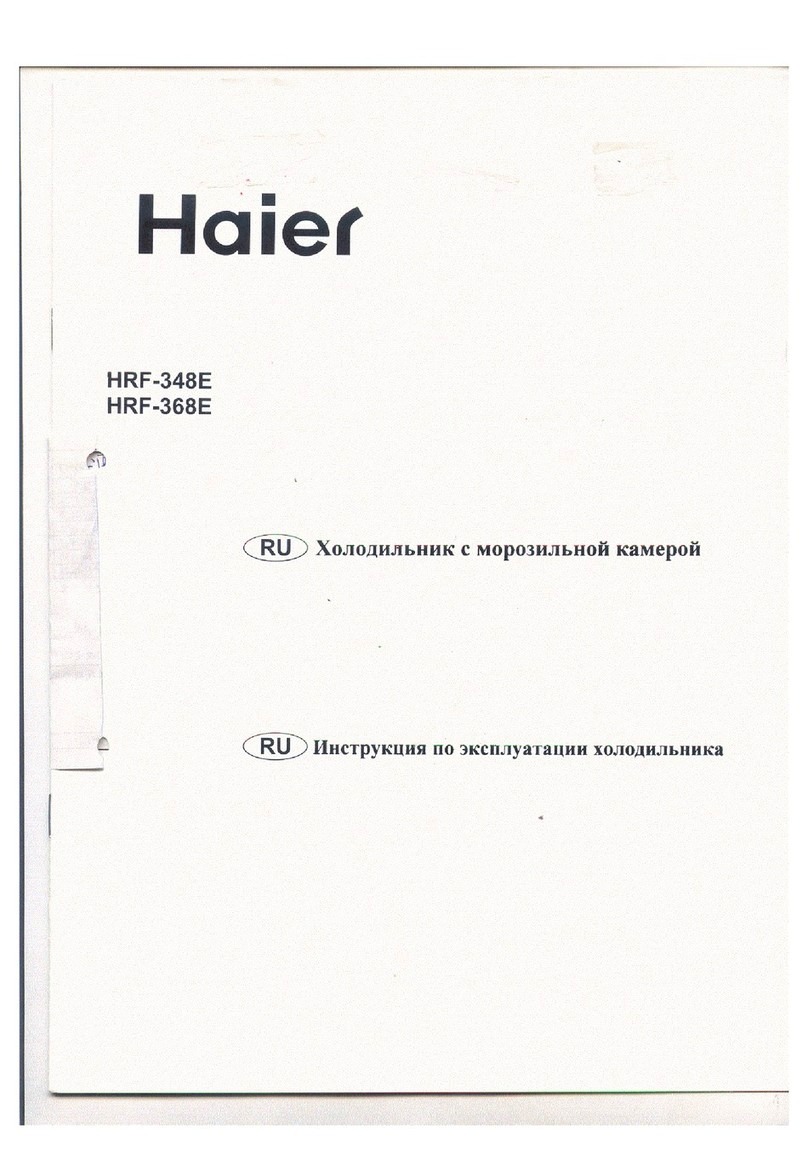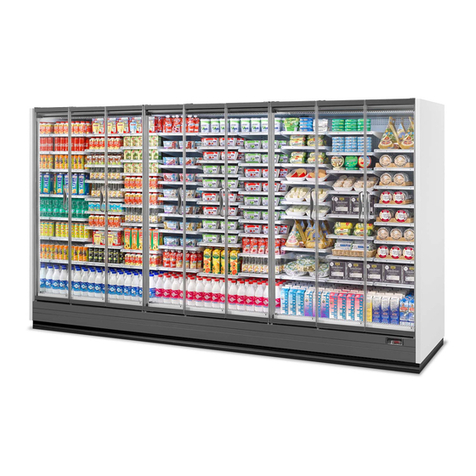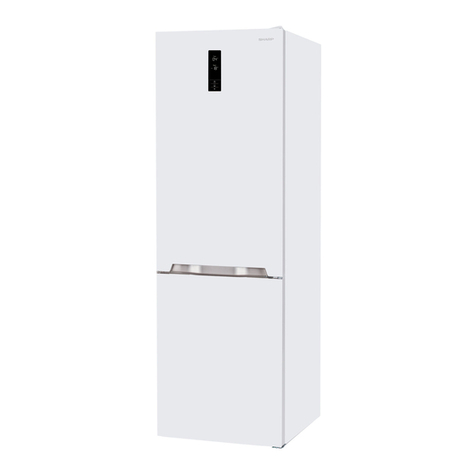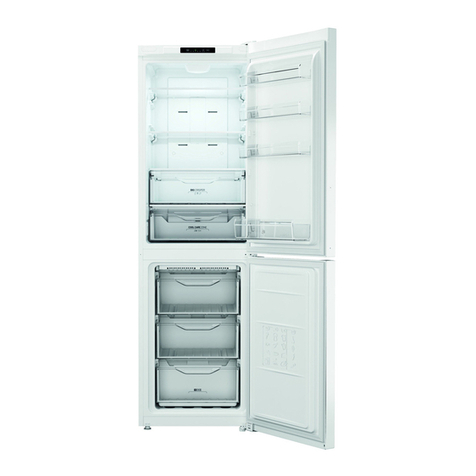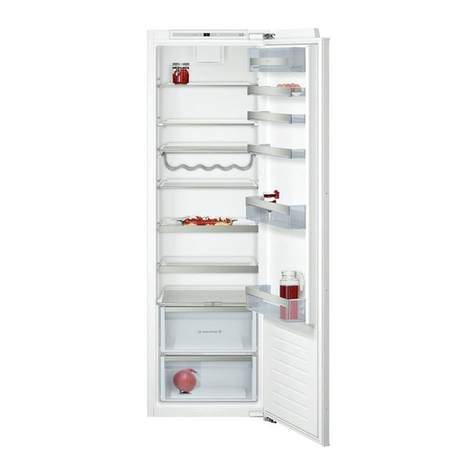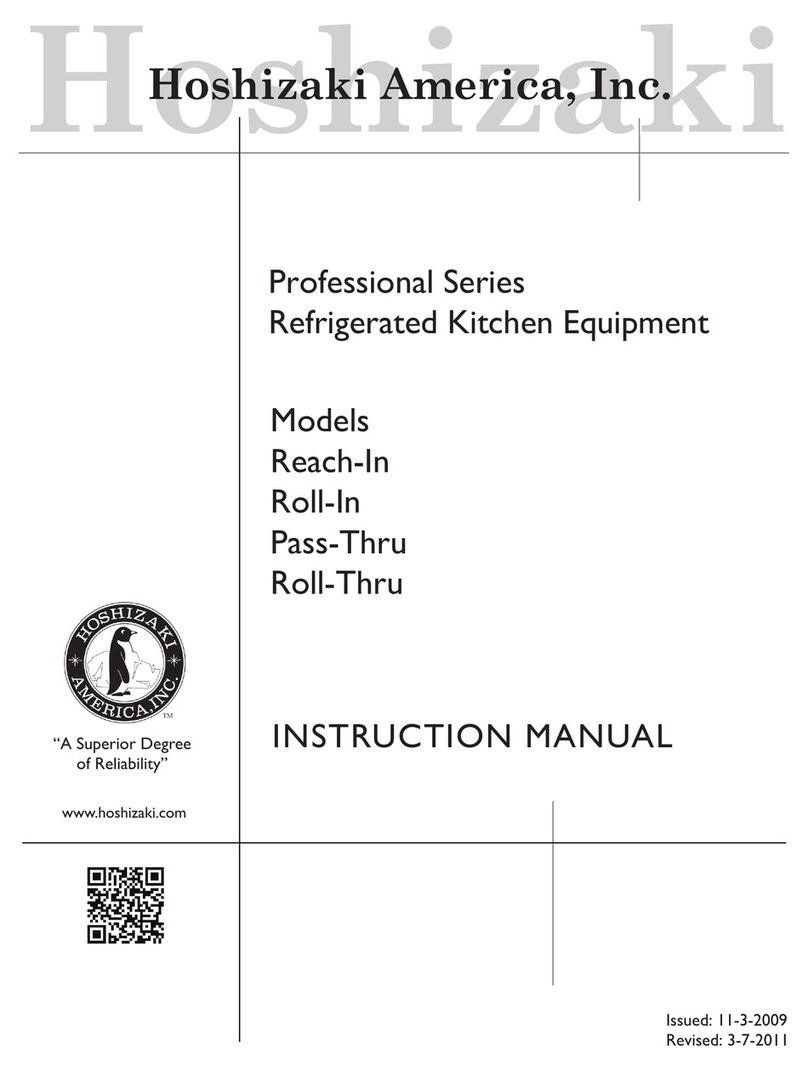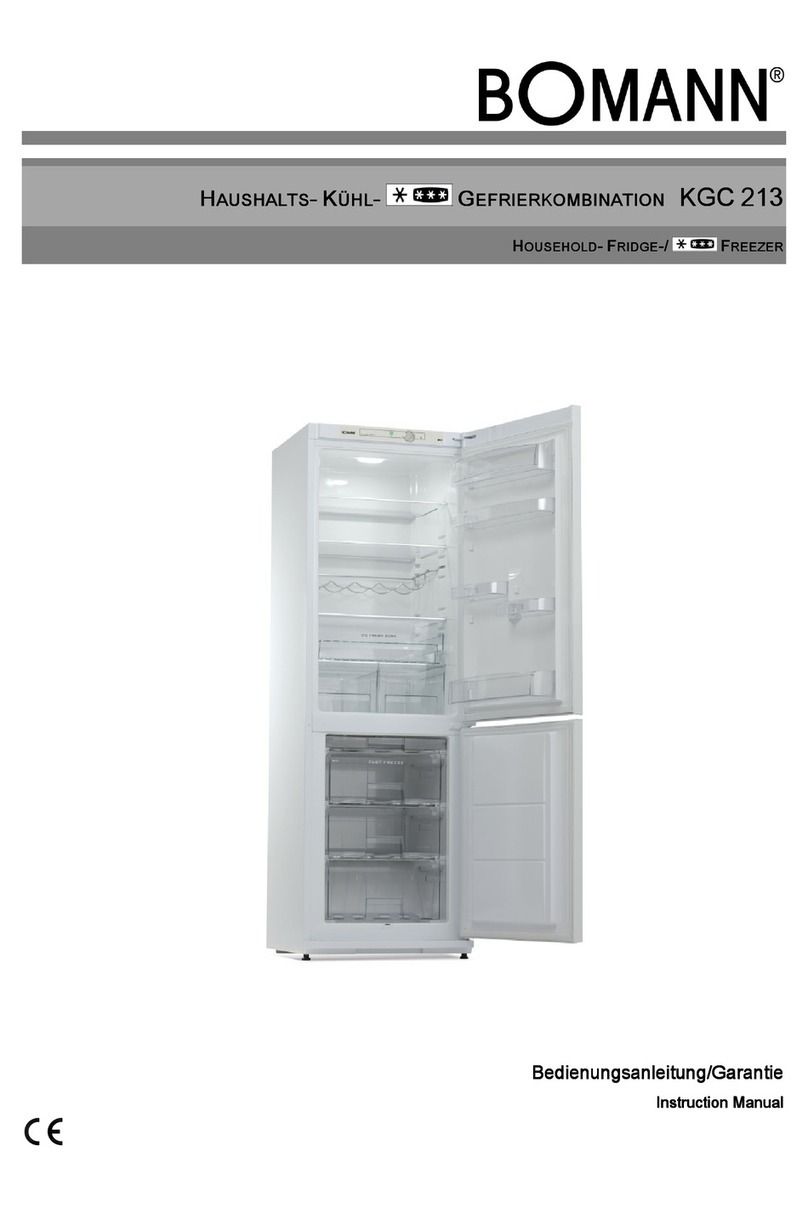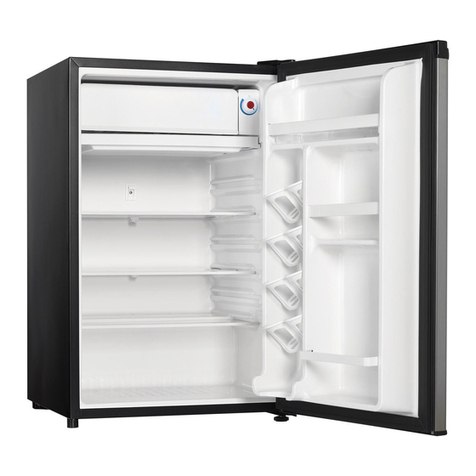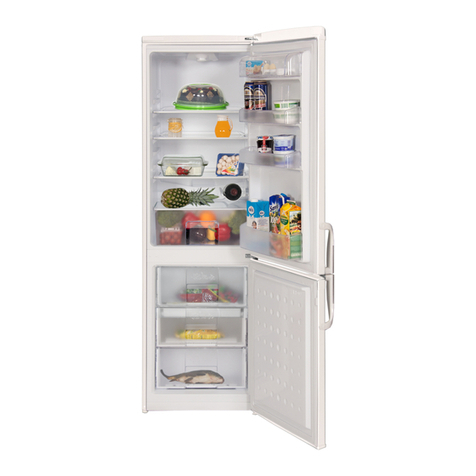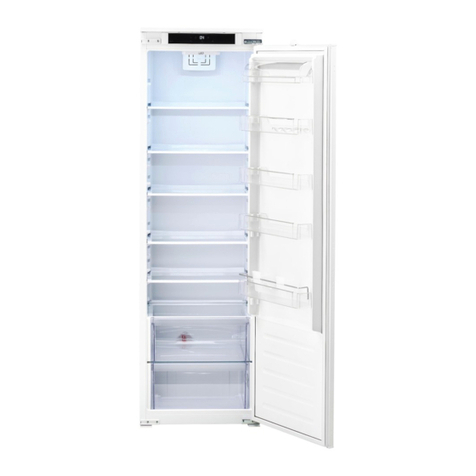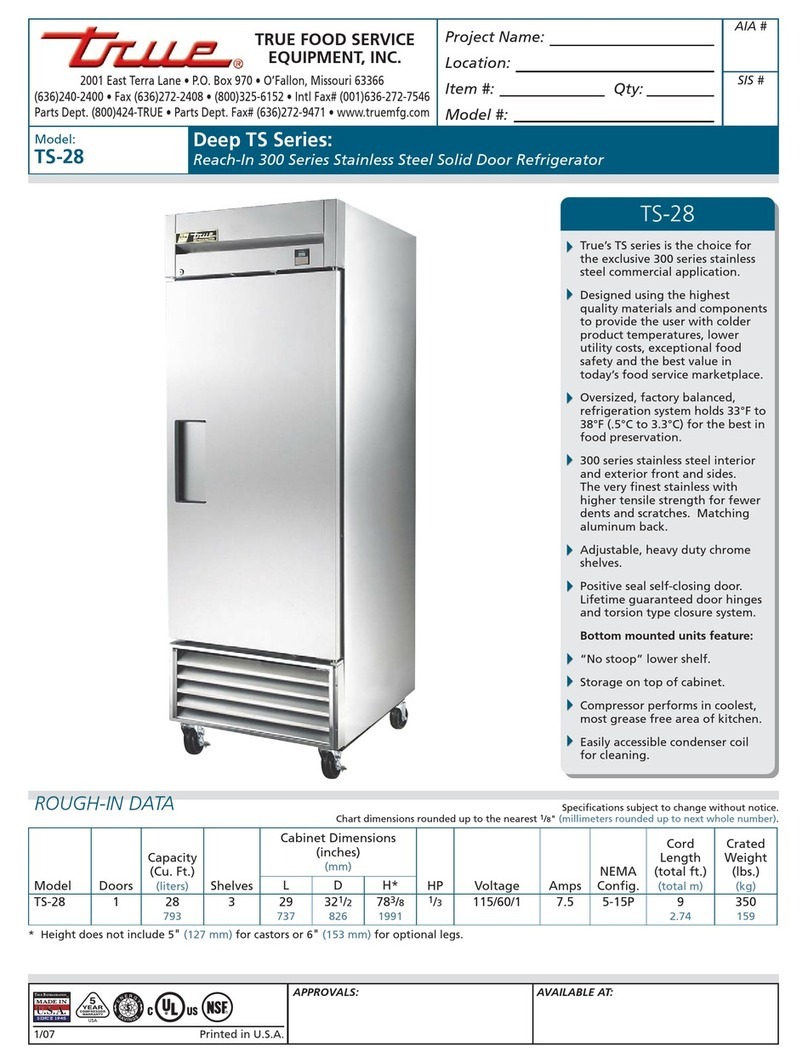
- 8 -
Compartments
TYPE
Target storage
temp.[OC] Appropriate food
1 Fridge +2≤+8
Eggs, cooked food, packaged food, fruits and
vegetables, dairy products, cakes, drinks and
other foods are not suitable for freezing.
2Freezer
≤-18
Seafood (sh, shrimp, shellsh), freshwater
aquatic products and meat products
(recommended for 3 months, the longer the
storage time, the worse the taste and nutrition),
suitable for frozen fresh food.
3Freezer
≤-18
Seafood (sh, shrimp, shellsh), freshwater
aquatic products and meat products
(recommended for 3 months, the longer the
storage time, the worse the taste and nutrition),
are not suitable for frozen fresh food.
4Freezer
≤-12
Seafood (sh, shrimp, shellsh), freshwater
aquatic products and meat products
(recommended for 2 months, the longer the
storage time, the worse the taste and nutrition),
are not suitable for frozen fresh food
5Freezer
≤-6
Seafood (sh, shrimp, shellsh), freshwater
aquatic products and meat products
(recommended for 1 months, the longer the
storage time, the worse the taste and nutrition),
are not suitable for frozen fresh food.
60- star
compartment -6≤0
Fresh pork, beef, sh, chicken, some packaged
processed foods, etc. (Recommended to eat
within the same day, preferably no more than
3 days). Partially encapsulated processed foods
(non-freezable foods)
7 Chill 2≤+3
Fresh/frozen pork, beef, chicken, freshwater
aquatic products, etc.(7 days below 0OC and above
0OC is recommended for consumption within that
day, preferably no more than 2 days). Seafood
(less than 0 for 15 days, it is not recommended to
store above 0OC)
8 Fresh Food 0≤+4
Fresh pork, beef, sh, chicken, cooked food,
etc. (Recommended to eat within the same day,
preferably no more than 3 days)
9 Wine +5≤+20 red wine,white wine,sparkling wine etc.
• Note: please store dierent foods according to
the compartments or target storage temperature
of your purchased products.
